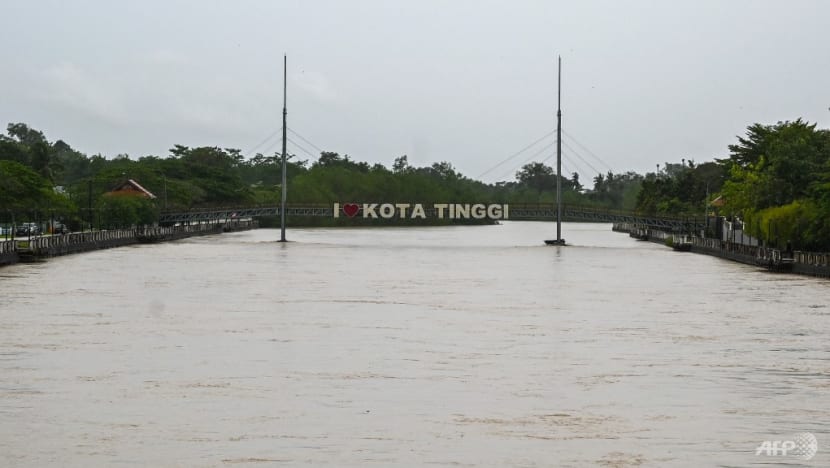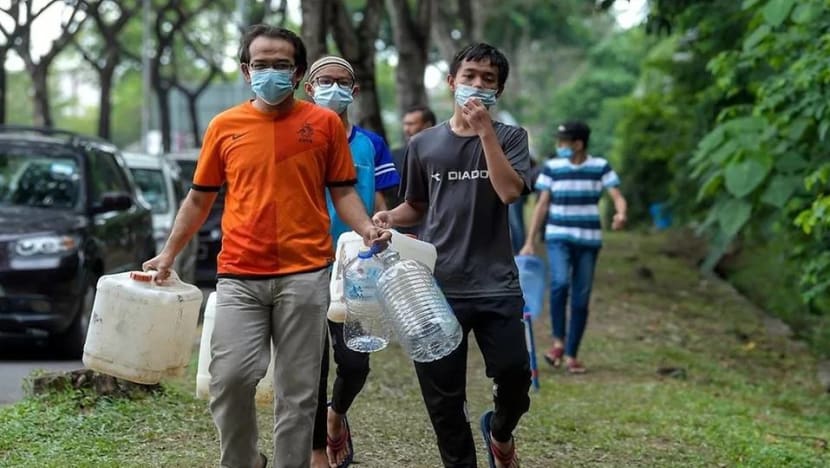Malaysia’s water tariff hike is the first increase in decades for some households. What will it achieve?
Consumer groups also want the government and water companies to be more transparent about how they will use the extra revenue to improve water security.


This audio is generated by an AI tool.
SINGAPORE: Malaysia’s plan to increase water tariffs will help the country stem revenue losses from leaky pipes, but more must be done to improve its water security, experts say.
Domestic users in Peninsular Malaysia and the Federal Territory of Labuan will pay an average of RM0.22 (US$0.05) more per cubic metre of water from next Thursday (Feb 1), the National Water Services Commission (SPAN) announced this month.
Following the announcement, all states except Sabah and Sarawak announced different increases to their respective water tariffs. In Malaysia, it is the 13 state governments that manage water issues, and some have not raised tariffs for decades.
Pahang, for instance, will raise its tariffs for domestic users for the first time in over 40 years. Households in the state will pay RM0.78 for the first 20 cubic metres of treated water, compared to RM0.37 for the first 18 cubic metres of water – the rate since 1983, the New Straits Times reported.
Penang will raise its domestic water tariffs for the first time in 31 years, while Negeri Sembilan will do so for the first time in 22 years. Melaka last increased domestic water tariffs 13 years ago.
The national hike translates to an average increase of RM3 a month in water bills, SPAN said, adding that this will help water companies improve their services.
According to SPAN, the increase is still insufficient to cover the actual cost of providing water supply services, which based on 2022 records is RM1.75 per cubic metre.
SPAN chairman Charles Santiago told local media that money earned from the new prices will be used to replace decades-old pipes and fix leaks in the distribution system.
Malaysia has an urgent problem of non-revenue water, where almost 40 per cent of the treated water it produces is lost through leaking or burst pipes as well as theft. SPAN estimates that non-revenue water contributes to a loss of RM2 billion in revenue each year.
But experts said other water issues also need to be addressed, such as the diversification of water sources. Malaysia gets most of its water from rivers and processes it in water treatment plants, but some of these sources are being polluted or drying up.
Mr S Piarapakaran, president of the Association of Water and Energy Research (AWER), said Malaysia has done “great work” to ensure most people get access to water, but faces challenges maintaining and improving its water infrastructure.
“Non-revenue water reduction, increasing supply security - in view of erratic weather conditions - as well as cost efficiency is the priority,” he said.
AGEING PIPES, WATER CUTS
There will be no shortage of water supply projects for the higher tariffs to fund.
The country’s ageing pipe system, some of which date back to its colonial era, is prone to frequent breakdowns that can disrupt water supply.
Earlier this month, more than half a million households and businesses in Penang went without water for up to four days after technicians carried out repairs at a major water treatment plant and fixed leaky pipes in other locations.
On Tuesday, local media reported that the state was set to face another water cut after an underwater pipeline in the Prai River burst again.

The majority of Malaysia’s pipes are also made of asbestos cement, which is associated with health risks, pointed out Mr Edwin Oh, a researcher at the Institute of Strategic Analysis and Policy Research (INSAP).
He called for the asbestos cement pipes to be replaced with those made from safer alternatives, like unplasticised polyvinyl chloride.
While he felt a water tariff hike was inevitable, Mr Oh also questioned if the government should first tackle existing leaks and inefficiencies in the piping system before expecting consumers to pay more for water at a time when some taxes, like the Sales and Services Tax, have gone up.
“Is there a concrete plan in place to expedite the replacement of asbestos cement pipes? How is the administration planning to reduce the non-revenue water losses?” he wrote in a paper published by INSAP on Jan 11, when there was already talk of an impending tariff hike.
Mr Oh believes revenue from the increased tariffs will not directly compensate for losses due to non-revenue water.
“Ultimately, raising rates is a blunt tool that won't solve the specific problem of non-revenue water. There must be a sophisticated (restructuring) of the water industry altogether,” he told CNA.
POLLUTION OF WATER SOURCES
In his paper, Mr Oh also highlighted the issue of river pollution, which has led to supply disruptions around the country and, in some extreme cases, had significant health implications.
In 2019, the illegal dumping of toxic waste in Johor’s Kim Kim River contaminated nearby rivers, impacted the livelihoods of village fishermen and released toxic fumes that led to the hospitalisation of nearly 3,000 people.
The majority of water pollution in Malaysia originates from non-point sources, meaning the pollution can be traced to different sources, like rainwater runoff from a night market that carries trash, food waste and oils into storm drains and nearby rivers.
Mr Oh said the government must revisit existing legislation to address the “complex” issue of water pollution.
“For instance, a review (of) the Environmental Quality Act 1974 (Act 127) is needed along with added initiatives to introduce stringent measures to combat those who do not practice proper industrial waste disposal,” he wrote.
DIVERSIFICATION OF WATER SOURCES
Adding to water security challenges are weather factors like rainfall, which has become less predictable due to climate change.
The water level in Johor’s Linggiu Reservoir has fallen to as low as 20 per cent in the past decade due to dry spells. This reservoir is also Singapore’s main water source in Malaysia, meeting up to 60 per cent of the Republic’s domestic demand.
Mr Santiago previously said that Malaysia should consider using reclaimed water as an alternative source to help tackle rising challenges concerning water supply.
After the tariff hike was announced, he told The Star that besides addressing current needs, revenues would also go towards preparing the water sector to deal with climate change, where raw water sources could decline.
But a consumer association in Malaysia urged the government and water companies to be more specific with their plans.
“What will the government and water operators do? What are the key performance indicators (KPI) that need to be set? And what is the short- and long-term evidence which can be seen to show tangible results?” Mr T Saravanan, chief executive officer of the Federation of Malaysian Consumers Associations, told CNA.
“These are the questions consumers are asking.”
AWER’s Mr Piarapakaran said state water companies are currently required to submit a three-year rolling plan on their infrastructure projects and service quality to SPAN for approval. This will be reviewed every year to ensure targets are met.
“Data on improvements, KPIs, failures and problems of state water companies are already available,” he said.
“We have urged the federal ministry, SPAN, state governments and water services companies to publish the list of service quality improvements for every supply zone so that both domestic and non-domestic consumers can give continuous feedback to the regulator.”
Mr Santiago told local media that water operators need to report every cent they spend, including listing the projects they will undertake, when these will be implemented, and the contractors they hire.
The implementation of these projects will also be displayed on the websites of SPAN and the respective companies, he said.


















